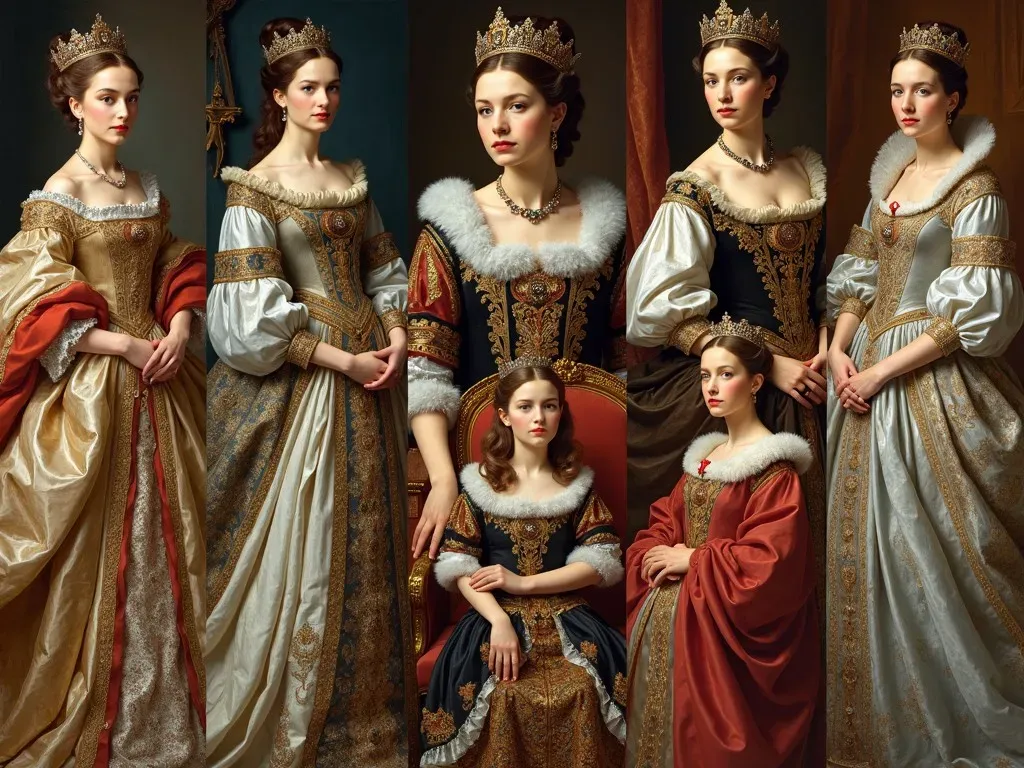Royalty paintings, also known as royalty artwork, capture the elegance, power, and majesty of aristocratic figures throughout history. These exquisite works of art are celebrated for their ability to immortalize a subject’s regal qualities, portraying them as embodiments of grace and authority. In this article, we explore the significance of royalty paintings, their evolution over time, and how modern artists are keeping this grand tradition alive.
The Artistic Legacy of Royalty Paintings
Royalty paintings have long served as a powerful medium for both social and political influence. From the opulent courts of Europe to the temples of ancient civilizations, these artworks were often commissioned to highlight the divine right of monarchs to rule and their connection to greatness. Many royal portraits became symbols of legitimacy, aiming to solidify a ruler’s reign in the eyes of the people and posterity.
-
Historical Significance: Royalty paintings contributed significantly to the narrative of a ruler’s power and authority. The visual representation often merged idealism with reality, creating a mythological aura surrounding the depicted figure.
-
Symbolism in Art: Colors, poses, and even the background elements in these paintings were meticulously chosen to convey certain messages — red symbolizing power, blue denoting humility, and gold representing wealth.
Table: Key Elements in Royalty Paintings
| Element | Symbolism |
|---|---|
| Color | Represents different traits |
| Pose | Signifies power/authority |
| Background | Context of the subject |
| Clothing & Attire | Wealth & Status |
A Glimpse into Iconic Royalty Artworks
Throughout history, several pieces of royalty artwork have become iconic, captivating audiences with their intricate details and powerful portrayals of historical figures. Here are a few notable examples:
- The Royal Family by Annie Leibovitz – A modern interpretation where the members of the British royal family are depicted in a contemporary manner, yet steeped in traditional elegance.
- Portrait of Henry VIII by Hans Holbein – This striking painting portrays the king in a monumental pose, showcasing his commanding presence.
- Portrait of Empress Maria Theresa by Martin van Meytens – An opulent portrayal of one of Europe’s most influential female rulers that emphasizes her authority and regal stature.
List of Famous Royal Portraits
- Marie Antoinette by Élisabeth Louise Vigée Le Brun
- Queen Victoria by Franz Xaver Winterhalter
- Napoleon Bonaparte by Jacques-Louis David
- Catherine the Great by Dmitry Levitzky
The Rise of Customized Royalty Paintings
In recent years, the trend of transforming everyday individuals into regal figures through customized royalty paintings has gained popularity. Websites like Nobilified and Turn Me Royal offer unique services where customers can send in their photographs to be turned into stunning oil paintings that reflect an aristocratic theme.
- Customization Process: Customers provide an image, and skilled artists create hand-painted oil portraits capturing the essence of royalty. Options for attire, background, and even symbolic elements can be tailored to suit the client’s preferences.
Benefits of Customized Royalty Artworks
- Personalization: Ensure your artwork reflects individual style and preference.
- Memorable Gifts: A unique and thoughtful present for loved ones that stands apart from traditional gift options.
- Decorative Appeal: Adds sophistication and elegance to home interiors.
Evolution of Royalty Artwork Styles
The styles of royalty paintings have evolved dramatically over centuries, influenced by cultural movements, artistic periods, and advances in Techniques. Below are some key styles that have marked the history of royalty artwork:
- Baroque Style: Emphasized grandeur and drama, characterized by bold colors, rich textures, and strong contrasts of light and shadow.
- Rococo Style: Featured a lighter, more playful approach with soft colors, intricate detailing, and themes of romance and leisure.
- Modernist Interpretations: Contemporary artists have reimagined royal themes using abstract forms, mixed media, and unconventional methods to draw fresh connections to historical interpretations.
Overview of Artistic Styles
| Art Movement | Characteristics | Era |
|---|---|---|
| Baroque | Grandeur, Dramatic Colors | 1600s |
| Rococo | Soft, Playful Designs | 1700s |
| Modernism | Abstract, Mixed Media | 20th Century |
The Lasting Impact of Royalty Paintings
Royalty paintings do not merely serve aesthetic purposes; they hold historical importance as reflections of power dynamics, social structures, and cultural narratives. By capturing the essence of rulers and their environments, these artworks help contemporary viewers better understand the complexities of past societies.
-
Cultural Legacy: Still relevant in today’s world, royalty paintings serve to remind us of historical narratives, offering insights into power, governance, and the symbolic nature of leadership.
-
Artistic Influence: Modern artists draw Inspiration from classical royalty paintings, incorporating traditional themes into contemporary forms, thereby preserving the rich legacy of aristocracy in art.
FAQs about Royalty Paintings
What are royalty paintings?
Royalty paintings are artworks that depict royal figures, emphasizing their grandeur and authority. These pieces often symbolize political power and social status.
How can I turn my photo into royalty artwork?
Several online platforms, such as Nobilified and Turn Me Royal, offer services where you can submit your photo, and talented artists will create a personalized royalty painting for you.
What styles are common in royalty paintings?
Common styles include Baroque and Rococo, each characterized by unique colors and themes that reflect the grandeur of the subjects.
Can royalty paintings be considered historical documents?
Yes, they often serve as historical documents by depicting the styles, customs, and societal values of the time in which they were created.
Where can I view famous royalty paintings?
Many renowned museums and galleries, as well as online resources like the National Gallery of Art, provide access to famous royalty artwork.
Royalty paintings remain a testament to the intertwining of art and history, celebrating the sustained fascination with power, identity, and the human experience across time.
